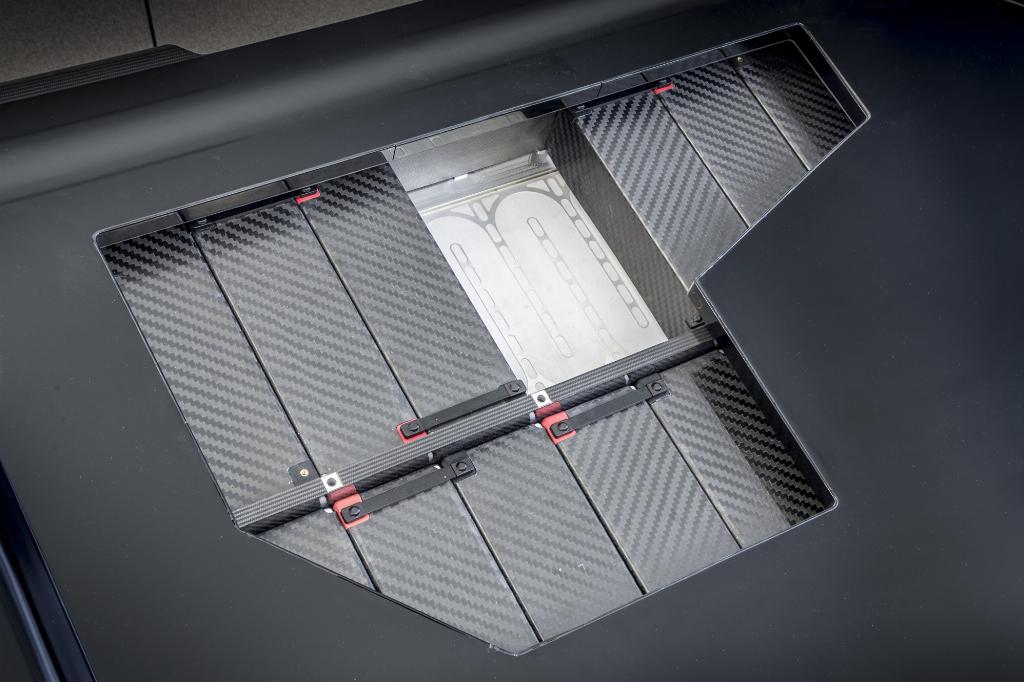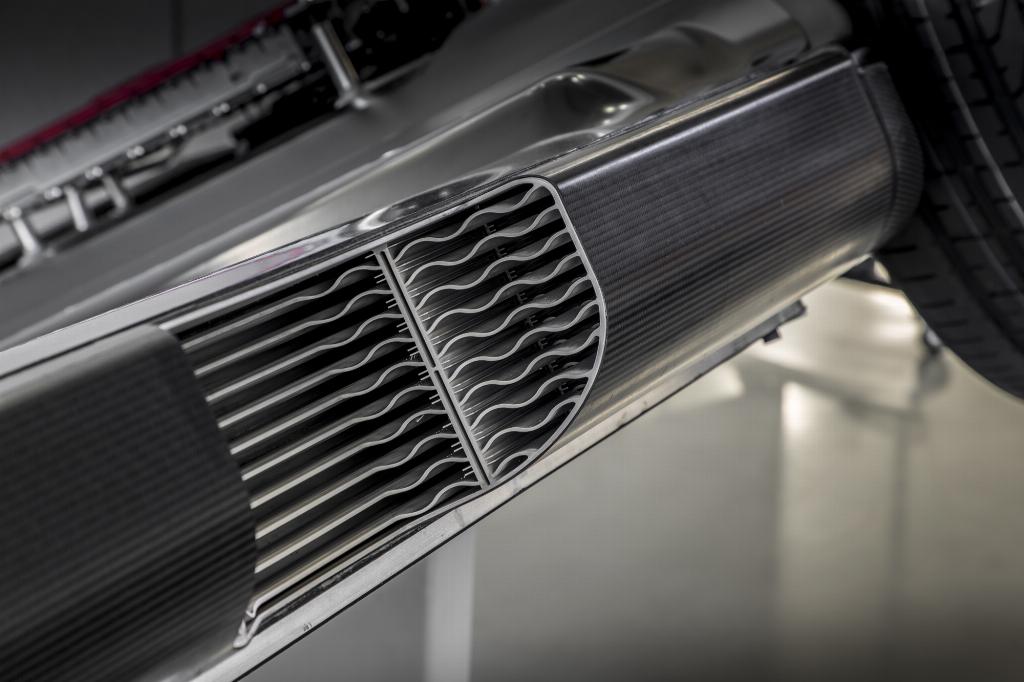Electric vehicle on fast track to the next generation

Mike Richardson hears more from Williams Advanced Engineering’s chief technology specialist - lightweight structures, Iain Bomphray, about the company’s next generation FW-EVX electric vehicle (EV) platform concept.
Williams Advanced Engineering recently revealed more of the technologies behind its innovative FW-EVX electric vehicle platform concept.
Displayed at the JEC World Paris exhibition last March, the platform integrates innovations in battery pack design, impact absorption, cooling and other systems within a lightweight, compact chassis that is readily scalable for C, C-D and D-segment vehicles. It’s a fresh approach that allows very high levels of integration across the vehicle, reducing weight and cost, as well as complexity to extend EV range and affordability.
The company itself began back in 2010, when Williams Grand Prix Engineering began diversifying its operations. This led to the establishment of Williams Advanced Engineering. This new business soon found itself working on a number of major projects, such as supplying all the batteries to the Formula E grid. In addition, Williams Advanced Engineering also led a consortium of organisations, including Unipart Group, Coventry University, WMG, Productiv, MCT ReMan (now Aspire Engineering) and The National Composites Centre in a successful bid for an Advanced Propulsion Centre (APC) competition. H1PERBAT, as the group was named, was established to build a high performance, low volume, flexible battery manufacturing facility in the UK.
The FW-EVX is designed to help overcome existing supply chain gaps in the industry, as well as offering support to both UK resin chemistry and fibre reinforcement development and bridging the gap between low volume prototype build and full-scale electric vehicle production. The project promotes battery system development and aims to create more commercial opportunities for this technology in the UK, and abroad.
With the company’s experience in Formula E and its 2018 Queen’s Award for Enterprise in Innovation for applying that learning into commercial applications, it is at the forefront of the electrification revolution in transport. This is where the FW-EVX comes in, applying innovations in light weight materials and aerodynamics inspired by the company’s expertise in these areas derived from Formula One.

The car’s the star
In a typical C-segment application, the FW-EVX electric vehicle platform weighs just 955kg, including all-round wishbone suspension, up to four motors, 4WD transmission, steering and a 350kg, 80kWh lithium-ion battery pack. Williams Advanced Engineering anticipates interest from two distinct customer groups for the FW-EVX: vehicle manufacturers looking for a next-generation EV platform that brings the benefits of highly integrated design, and those seeking specific areas of technology for their own platforms.
Williams Advanced Engineering’s innovative thinking includes high-strength battery modules that contribute to the vehicle structure and using two different innovations in carbon composites to reduce weight and simplify assembly.
The bonded aluminium and carbon composite centre module of the FW-EVX platform includes chassis side rails that provide controlled crush zones to increase impact absorption. The side rails also provide cooling air for the battery pack, collected through ducts at the front of the vehicle, helping to minimise both the vehicle frontal area and the aerodynamic drag normally associated with heat exchangers, as well as providing an additional weight saving. The sills channel cooling air through internal radiators then direct it rearwards to create downforce via an aerodynamic diffuser.
Though the FW-EVX platform is initially aimed at premium and niche vehicles, there is a strong focus at Williams Advanced Engineering on bringing weight-saving composite materials to higher volume applications. For example, the suspension wishbones are press-formed from up to 80% recycled carbon composite using a new, highly automated, near zero waste process with a cycle time of just 90 seconds. Williams calls this process ‘RACETRAK’, and the resulting parts are 40% lighter than conventional aluminium wishbones yet comparable in cost to aluminium forgings.
“This particular platform was designed to be modular and scalable, so we need to integrate solutions that are quickly adaptable,” begins Williams Advanced Engineering’s chief technology specialist - lightweight structures, Iain Bomphray. “The FW-EVX suspension components address the issue of improving production rate and reducing scrap and cost. There are three different reinforcement architectures, each performing their own function, and the architectures are fibre agnostic – aiding the exploitation of this technology into different sectors and components. One of these fibre architectures is formed, eventually robotically, in a continuous loop and preformed into the shape of the wishbone. This is where the RACETRAK name comes from because it looks like a continuous loop.”

2D materials create 3D structures
The twin goals of lightweight and improved safety are reflected in the novel construction of the battery module, for which Williams Advanced Engineering evolved a ground-breaking technique in composite materials manufacture.
Using an ‘Origami-like’ technique, the company has invented a method of creating an engineered hinge embedded in a single composite preform that allows 3D structures to be created from 2D materials then folded when required. Called ‘223’, it opens up the potential to use new types of assembly processes alongside much lower cost, more flexible logistics.
Based on its experience as the battery supplier to the ABB FIA Formula E Championship, Williams Advanced Engineering has designed the central battery module of the FW-EVX as a low, slim, ultra-stiff honeycomb of interlocking composite boxes containing the battery cells. Using the highly-automated ‘223’ process, each box is manufactured in sheet form, then folded and bonded to create the required shape. The resulting exo-skeleton contributes to the structural performance of the vehicle and provides enhanced safety systems, including crash protection and isolation. The individual location and securing of each cell is also a crucial part of the cell's longevity.
“The 223 process involves actually folding 2D composites instead of forming them as a 3D shape. We’re able to demonstrate that we can do this successfully, and there are a number of applications that can benefit from the 223 process. For the composite engineer, it’s another process they can bring to help increase the production rate issues.
“Because the battery modules are flat, they can be stacked during shipping and for storage, as they don’t need to be folded immediately as there is enough out-life in the hinge area. There are operational benefits - not just from the process of forming the box, but how we integrate it into the manufacturing area.
“Reducing the battery weight is driving the development of composite materials. There is a lot of industry pressure in getting the weight down, making the system cost-effective and delivering at the production rate the automotive sector requires. It is the stimulus for the whole composites automotive industry. The aerospace industry is looking at what the automotive industry is doing because it has similar challenges in achieving production rate too. Our platform is based on an C segment platform. By adding another row of batteries on the platform takes us up to a C-D segment, so it’s capable of being scalable.”

A virtuous circle
The high level of integration creates a virtuous circle where each improvement in weight and functionality leads to additional benefits. For example, the weight saving permits increased battery capacity and greater vehicle range.
“We can make the sills lighter and we can improve the balance of the structure because we’ve been using the battery modules as an integral structural member. As a result, we can take weight out of other parts, which otherwise would have to take the burden of that load. One of the ideas behind creating this platform is to give us something we can talk about and show people some of the great things we’re doing in the name of Williams Advanced Engineering.”
Bomphray reckons the platform is currently at technology readiness level (TRL) 3 and has already identified industrial partners in the supply chain to help it accelerate that over the next 12 months and get it to a pilot line that is capable of producing at rate.
“Being a motorsport company, we have a high cadence – this is one of the Williams attributes: we like to do things quickly! As an agile company, we are not encumbered by the same constraints that a larger company might have to go through; we can be quite focussed.
“The wishbones are phase two of a five-phase programme. Phase two took us around nine months to complete and comprised the production of first-off prototypes, and then taking the results from that and making the wishbones that were on our JEC World exhibit. It’s been quite an achievement for us to get to this point. The moment we start engaging with the supply chain and making them in volume, we can start getting the major players in the sector interested in the technology. We need help to pull it through the system, to better define certain points and find the best route to market.
“Typically, you will see this concept feature on higher performance vehicles first and then as we mature the processes and bring the cost down we’ll quickly open up more markets,” Bomphray concludes. “We’ve benchmarked the automotive industry and demonstrated that our RACETRAK concept is cost-competitive with the types of forged aluminium wishbones that you see in the likes of high-end prestige cars.”
So, there you have it - an electric vehicle constructed on the FW-EVX platform that is lighter, safer, greener and much more cost-effective. By designing the key systems as an integral part of an aluminium/composite vehicle chassis, Williams Advanced Engineering has greatly reduced weight and many of the compromises that arise when the individual elements of an EV powertrain are sourced separately, forcing the vehicle architecture to be created around standalone packages.






